The Changing Role of the CTO
A panel of top-level technology leaders from five school districts looks back on the role of the CTO in K–12 education and how it's transforming in the new year.
When Donna Williamson began her career as an educational technology director 30 years ago, she taught multiple technology-related courses every day and provided professional development for teachers, on top of her responsibilities managing the district's technology with little-to-no assistance. Since then, she has seen technology departments expand to support the ever-increasing demands of ed-tech initiatives.
"The role has become more of one of leadership, vision. As recently as five years ago, the CTO in a K-12 school was the person who was providing solutions," she said. "And now, it's more about coaching your administrators, your teachers, with those executive coaching skills, that brings out the solution from them."
THE Journal spoke recently with Williamson and four other district technology leaders about the changing role of the CTO in the current era of STEM and STEAM. Those district technology leaders include:
- Diane Doersch, chief technology and information officer, Green Bay Area Public School District in Green Bay, WI;
- Phil Hintz, director of technology, Gurnee School District in Gurnee, IL;
- Adam Phyall, director of technology and Media Services, Newton County School System in Covington, GA;
- Joel VerDuin, chief technology and information officer, Anoka-Hennepin School District in Anoka, MN; and
- Donna Williamson, technology director at Mountain Brook Schools in Birmingham, AL.
THE Journal: How has the role of the K-12 chief technology officer changed over the last 20-or-so years?
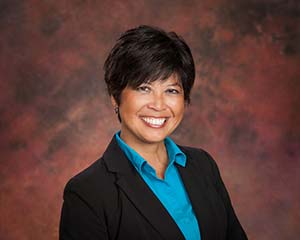
Diane Doersch, chief technology and information officer, Green Bay Area Public School District in Green Bay, WI
Diane Doersch: I've really seen a transformation from the technical side to the ed tech side, and now it's coming even to the policy side. Because as we've made our move to the cloud, we're having to pay more attention to FERPA, HIPAA, cloud storage, security agreements, student data privacy and security, helping our staff and students understand phishing scams, and really helping to build secure environment for our kids to work in.
Phil Hintz: Technology has become so pervasive across the entire district, in every area, whether it be physical education class, or HVAC systems, or you name it, technology is in everything we do in a school district. Even on the buses, putting WiFi on school buses, tracking buses with GPS. And that's the change that has occurred over the last 20 years, is that it's just in everything anybody does.
Joel VerDuin: I think one of the biggest differences is that need to be a partner, keeping an eye on the objectives of the organization and finding out where they can help, as opposed to being a driver for things…. Sometimes we have to drive just to make sure that we're in the right conversations and inputting the right visibility around some of the trends that are coming. But I don't find that I'm working as much on technology initiatives that I feel like we need to do as an organization. I find myself partnering and helping other people move their missions along much further.
THE Journal: What can the K-12 CTO do to enable the latest trends in education?
Doersch: We take away a lot of the routine things by building digital environments that are easy for our students and our staff to access. We incorporate single sign-on as much as we can. We try to automate tasks. We run batches of data behind the scenes so our teachers are always working with the most up-to-date data. All those types of things to build efficiencies…. Because of that, we hope that our staff and our students will have more opportunities to be innovative. And innovative means being able to try things, fail at things, revise things, try again, all those things that are real-life skills.
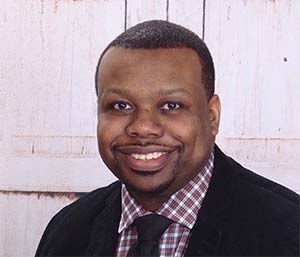
Adam Phyall, director of technology and Media Services, Newton County School System in Covington, GA
Adam Phyall: I think the biggest thing is just to get out of the way. A lot of times you have CTOs with a mindset of control. So, when I say get out of the way, allow the curriculum and teaching and learning departments of the districts to do most of the driving as it relates to the direction. And add a voice and support teaching and learning in the district. Oftentimes it's a power struggle in some places between some CTOs and curriculum directors, superintendents. There has to be that partnership where we're supporting curriculum and instruction, not necessarily telling them what they can and can't do with the technology.
VerDuin: We find a constant need to be working with other leaders in the organization, to be there when they're having conversations about improvements, and then being able to bring technology to the table and provide options, provide additional information, put them in touch with resources.
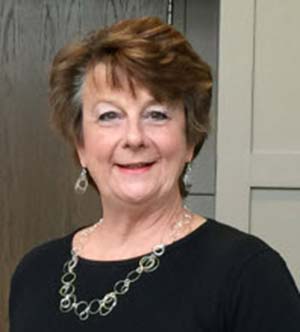
Donna Williamson, technology director at Mountain Brook Schools in Birmingham, AL
Williamson: If you're going to provide that leadership and vision, then you've got to constantly be on the forefront of knowing what's coming. Forecasting. I think forecasting is so very important. Looking at trends so you feel comfortable with what's coming and why it's coming. And also, not to jump at the latest shiny object. What's really sound and has strong instructional value. You've got to be well informed and well involved in different national organizations.
THE Journal: As the CTO, how have you helped facilitate STEM/STEAM initiatives in your district?
Doersch: Every year, out of our Department of Technology funds, I put money aside and our tech integrators vet a lot of STEM products. They do the product research, and I provide the seed money to purchase the items. Once they find that it's useful and helpful and not junk—because we've bought some stuff and it has been junk—we create a list. And then when people say, 'Hey, we're putting our makerspace together,' or, 'We want to get more STEM,' we say, 'Here, take a look at this list because we have vetted everything. You can even try it out because we've got some kits down at central office that your tech integrator can bring out and you can try with your kids to see if this is something that you would want.'
Phyall: We know our numbers nationally in the U.S. with the number of computer science opportunities that are out there, and the low number of girls and minorities that are currently seeking degrees in that area. So, we made a focus this year on coding for girls. We do coding for all students in our Hour of Code, but we did this special Women of Code [event]. We brought in various people from Microsoft, Apple, some of our other educational partners, and they had women leading our Hour of Code. So, really giving our kids exposure to women in that field.
Williamson: We have an Institute for Innovation, which is an avenue for teachers who want to try something really outside the box. It takes really good ideas and gives teachers permission to try-fail-and-try-again, with a lot of extra support and a little bit of money to test it. We had some trail blazers, and they wrote a grant for the Institute for Innovation and it was accepted. They created our first STEAM Room at that school. I worked hand-in-hand with that group of teachers, looking at the tools that were needed, the design of the room, the furniture, the wiring, trying to create that model environment.
THE Journal: What is the role of the CTO in securing funding for any of these STEM or STEAM initiatives?
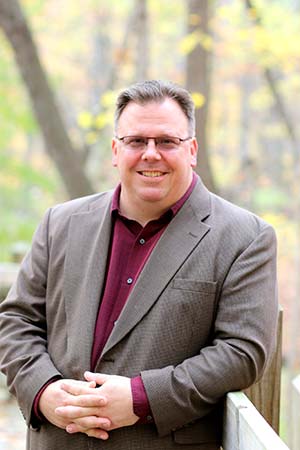
Phil Hintz, director of technology, Gurnee School District in Gurnee, IL
Hintz: Part of it was looking for technology partners that might want to showcase their products in our space and by doing that, maybe give us a discount for some of their products. An example would be a company, BenQ, they make an 84-inch, 4K touchscreen display that we put in the library. We put it in an area that we originally called the presentation area. But the presentation area has turned into not only a teaching area, but also what the kids now call their "TED Talk" area. The kids can do presentations and utilize the 84-inch touchscreen for their presentations.
Normally for an 84-inch screen, you're looking at upwards of $10,000. I was able to get it for $4,200 because they had a sale where, if you buy your first one, like a seed program, you could get it for half price. That was a really good find and anybody can find that. And it worked so well, we were able to show off how we were using it. BenQ came out and saw how we are using it and was able to capitalize on that for themselves, taking some pictures and doing some marketing.
Williamson: I work with them [teachers and staff] on looking at prices. I've just spent three days researching, for example, all the coding tools that are out there for elementary schools because four of my elementary schools received some money from the district curriculum department to buy those tools. I go out and look at all the vendors. I make price comparisons. My team looks at it and goes, 'Hey, this tool is not going to be manufactured anymore after July, so you might not want to buy it because you're not going to get any support on it.'
THE Journal: What challenges have you faced implementing any of these STEM or STEAM initiatives, and how did you overcome any of those challenges?
Doersch: Innovation versus policy is definitely one—student data privacy and security. That continually is an issue because, number one, we want to keep our kids safe, but there are so many things out there now. When we talk about personalized learning, we have to know about our students for personalization to take place, and so data needs to be shared. Because of that, we have to have agreements in place, and we have to make sure that the companies that we work with are trustworthy and will uphold our expectations of student data privacy.
Hintz: Getting teachers on board with the change in mindset of the use of a library [as a makerspace and STEAM lab] and also the change of mindset of, 'I can take my class outside my four walls of my classroom now.' That was a little bit of a challenge. But we marketed the library to the teachers and said, 'Look, here's what you can do if bring your class down here.' Once we got them to try it, they were signing up left and right, and the librarian had to come up with a pretty elaborate everyday schedule for the use of the different spaces within the library.
Phyall: One of the things is just keeping everyone on the same page, and thinking through the plan. People see something at a conference and want to come back and implement it. It's like, 'Okay, that's great, but that's not part of the plan.' Because there are always new products out there. So, trying to keep all parties within the district focused on the initiative that you are focusing on and not hopping to what they just saw here or there.
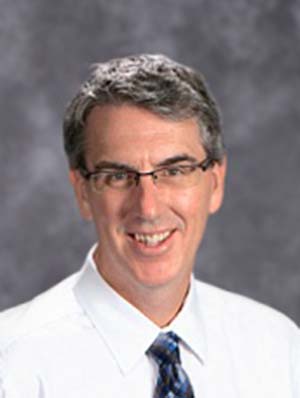
Joel VerDuin, chief technology and information officer, Anoka-Hennepin School District in Anoka, MN
The next thing is really understanding that our curriculum and instruction department need to be in charge as it relates to 1-to-1 initiatives. A lot of times technology gets ahead and gets the devices and does the setup, but if the curriculum and the teaching and learning is not there, then you've waste a lot of money. It never should be a technology initiative. The need for the technology should be driven by the instruction.
VerDuin: Sometimes it can be hard for us to carry through on what our teachers would ideally like. In one of our high schools where we're bringing a new STEM program online, they really would like to do some pretty fantastic things when it comes to display technology and having kids working in small collaborative spaces. But sometimes we just don't have the physical size of the room or sometimes the technology just doesn't quite work that easily. So, there are times when we aren't able to quite meet people's expectations, but we generally come pretty close.